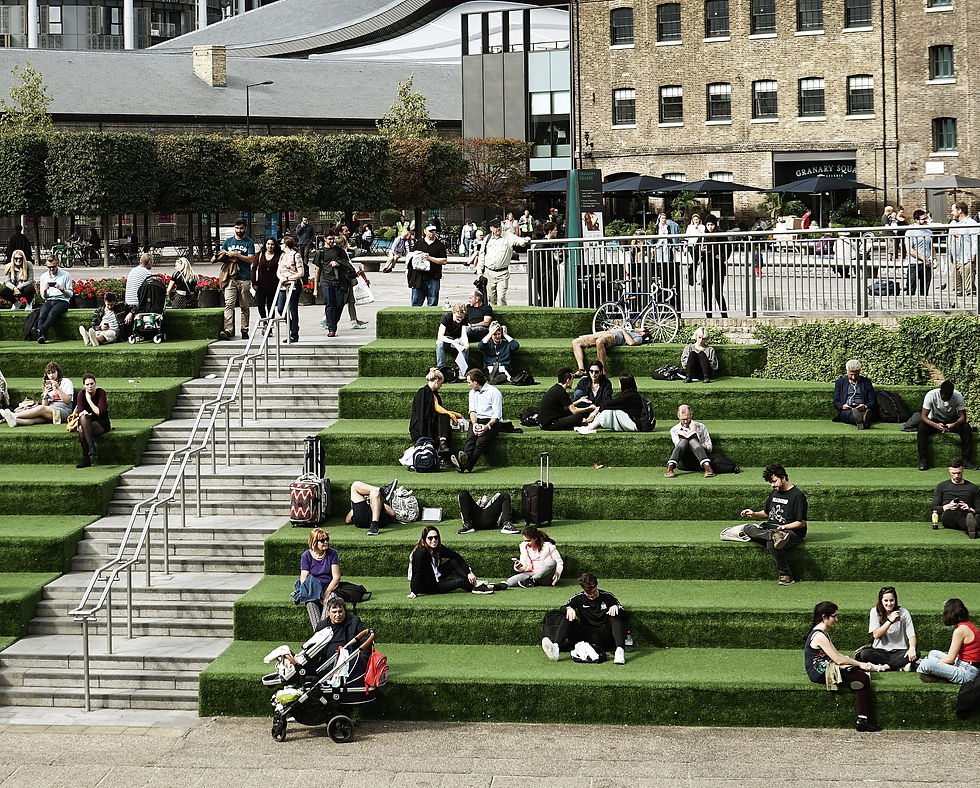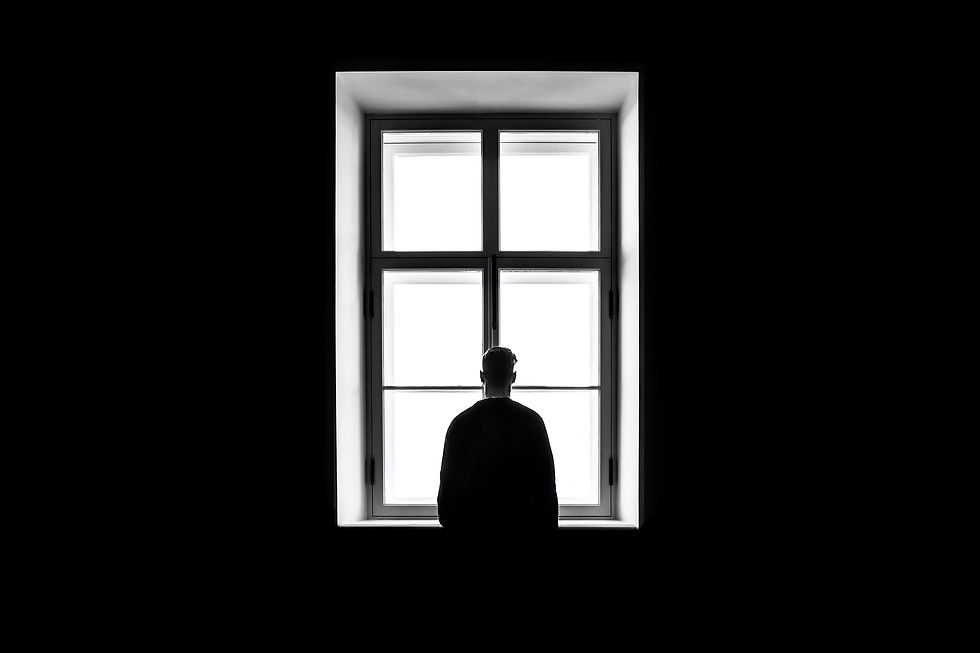
Essay and call-to-action by Natasha Reid, published in the Quality of Life Foundation's collection of thought-leadership pieces here (Sept 2021)
Our built environment is our habitat
There is no doubt that places have a significant impact on our happiness, wellbeing and health. Yet when it comes to making the built worlds that are our habitats, the most crucial of questions — how a place will affect the people that spend time there, and what will be the impact on their lives — are rarely, if ever, asked.
What could our cities, neighbourhoods, homes, workplaces and community spaces be like if they were created based on people’s emotional, psychological and social needs? Could we shift to a new way of thinking about our surroundings, based on really understanding how they affect our innermost human workings?
Surely when it comes to making our own habitats, their suitability for people’s lives and happiness should be built into the very foundations, from the very first principles.

“As the UK emerges from the COVID-19 pandemic it would be a tragic mistake to attempt to re-establish the status quo that existed before”
Build Back Fairer: The COVID-19 Marmot Review.
The Pandemic, Socioeconomic and Health Inequalities in England December 2020
Turning our thinking inside-out
In this moment of disruption there is a chance to reflect; to question the structures that shape society but do not serve us well. In the aftershocks of this pandemic’s ever-shifting “new normals”, let us make sure we create space for new and better patterns of life to emerge. We need to turn our thinking inside-out.
We need Urban Empathy.
Empathy is not a new idea in design, but in the mainstream narratives of development and regeneration it is a bold departure from the language of asset management. It still produces a “return on investment” but it requires a shift in the way that value is understood in terms of impact on people’s lives, wellbeing and happiness, alongside economic capital.

Social determinants of health
We know that some places make us feel good whilst others make our hearts sink. But studies such as the government’s Marmot Review really drive home how critical our surroundings can be: “People living in the poorest neighbourhoods in England will on average die seven years earlier than people living in the richest neighbourhoods”.
The more extensive the housing deprivation, the more damaging the effects on people’s quality of life, health and, in fact, life chances. Our environments are part of the “Social Determinants of Health” — in short, all the non-medical factors that shape health outcomes.
And when people are in a position of disadvantage, this will compound across many factors: poor quality housing could affect a child’s ability to concentrate at school, impacting their mental health, affecting job prospects leading to increased stress and physical and mental health problems. It is an ongoing cycle, each hardship increasing the others, making people worse and worse off.

The risks of emotional isolation
Another example of why we need more Urban Empathy is loneliness — a pivotal mental health issue. The format of homes and neighbourhoods have the power to either enable or disable interaction and sociability. These are fundamental human needs, particularly when it is known that emotional isolation is as high a risk factor for mortality as smoking.
Addressing complex challenges like these is not about throwing in “feel good” aesthetics at the end, or sprinkling in some green space into a development. As human beings, we need much more than functional shelters or superficial decoration to feel good and for meaningful quality of life.

Three steps to developing deeper Urban Empathy
1. WORK WITH THE INVISIBLE
Our individual and collective needs are invisible and complex; it’s certainly a challenge to understand how places really impact people. But it is these hard-to-capture things that must be considered first - to be able to create the physical, visible conditions that can enable people to grow and thrive.
To be able to drive how places can be made differently.
Fundamentally, this requires more empathy.
There is increasing evidence in the sciences showing how the overall make-up and also the very small details of our surroundings have profound consequences on the way we feel, how we relate to one another, even our capacity to grow in our lives.
More and more, we’re seeing crossovers between place-makers and scientists (neuroscience, psychology, behaviour science and more), to create new ways of making more human-centred and socially conscious cities.
2. CREATE ECOLOGIES OF EXPERIENCES
To create conditions that enable growth and thriving in individuals, groups, communities and neighbourhoods, shouldn’t we be thinking more in terms of “ecology”? This looks at the interaction of living things and their environment: thinking in terms of relationships and ecosystems that affect one another — and not just in stuff.
Rather than seeing places and buildings as a collection of fixed things, what if we could instead see them as systems of dynamic and invisible experiences that a person will move through? Through the day. Through their week. And also across their whole life.
What if places can adapt to different and changing needs — bringing time and resilience into the equation? Acknowledging the many unknowns we may face as a society going forwards.
3. BE MORE HUMAN
By asking different questions, we could find the ways to new answers.
No longer ‘how can the efficiency of this site be maximised?’, but instead how to build resilience, empowerment, understanding, connection and interaction through this place. How to build possibility and opportunity for people. Can we even think about how this place can affect and improve people’s life chances? At this strange time, why don’t we get closer to the things that make us human? Lean into the intricacy and messiness. Open ourselves up to the complexity.
Because alongside the health crisis, there will need to be emotional healing in a way, and on a global scale.
“There is an urgent need to do things differently...."
Build Back Fairer: The COVID-19 Marmot Review.
The Pandemic, Socioeconomic and Health Inequalities in England December 2020
Natasha Reid is founder of Matter . Space .Soul.
As a fellow of the Centre for Conscious Design, she was co-chair of the Conscious Cities London conference 2020
FURTHER READING
Professor Sir Michael Marmot, Jessica Allen, Peter Goldblatt, Eleanor Herd, Joana Morrison, Institute of Health Equity, 2020
Homes, health and COVID-19. How poor-quality homes have contributed to the pandemic. Centre for Better Ageing, 2020
Charlie Leadbeater and Jennie Winhall, 2020.
Pam Alexander OBE, Connected Places Catapult, 2020
Charles Leadbeater, Centre for London 2014
Cat Drew, Design Council 2019
From Design Thinking to Systems Change. How to invest in innovation for social impact, Rowan Conway, Jeff Masters and Jake Thorold. RSA, 2017

Comentarios